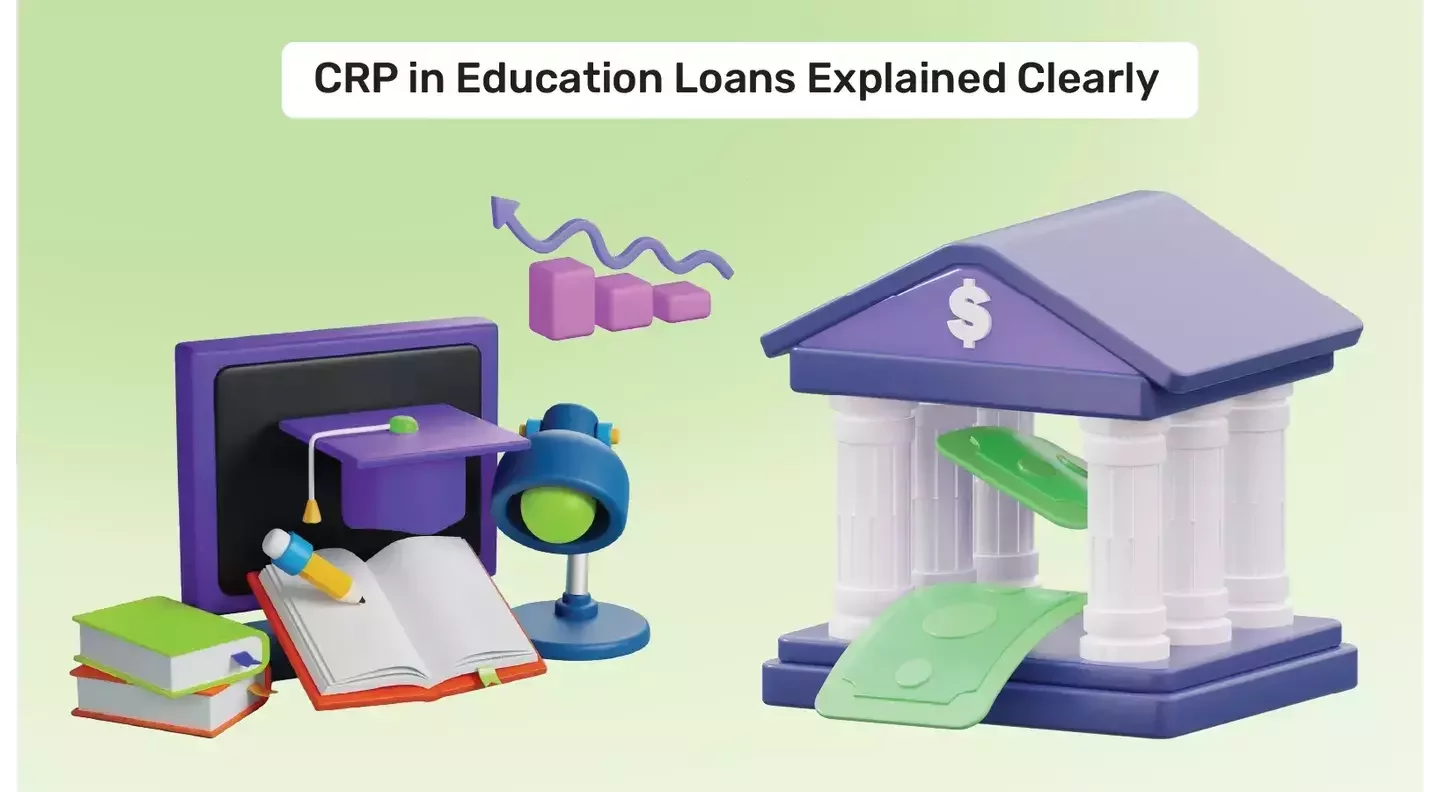Get instant loan offer suitable to your profile !


On this Page:
Interest rate is not a single entity; it gets affected by other factors, including CRP. Read the blog to know about it in detail.
When planning to pursue higher education, financing through education loans has become a necessity due to the increasing cost of education. However, lenders and categories affect the interest rates. But, interest rate is not a single factor; it has various factors included in it. Among these crucial factors, one important component is Credit Risk Premium (CRP).
When you get to know about these as single entities, it might seem minimal. However, these charges increase the interest rate and impact your finances during the repayment. So, read the blog below and learn everything about the CRP to determine the interest rate on your education loans.

To grasp the role of CRP in education loans, let's first define precisely what is credit risk premium is. A loan risk assessment is charged within the interest rate by lenders as compensation for taking the extra risk in lending the loan. This risk arises from uncertainty regarding the borrower's ability or willingness to repay the loan on time, making CRP a protective measure against possible financial losses.

CRP full form in education loan stands for Credit Risk Premium, which is the additional rate of interest charged by the banks over and above the standard base rate. This gets influenced by the perceived risk of lending to a particular student. Banks evaluate the following key risk factors when setting the CRP:
A higher credit score shows financial reliability and thus lowers CRP.
Strong financial stability of a co-applicant provides security of the repayment to the lender and thus reduces the CRP.
Every reputable institution and high-demand course ensures that you have higher employability and income potential after graduation, thus decreasing the risk associated with the loan, hence lowering CRP.
All these factors are weighed as a whole, and depending on the assessment outcome, a higher perceived risk profile leads to an increased CRP, raising the overall interest rate of the education loan.


An informed understanding of CRP is beneficial for the applicant and helps them know and evaluate the reasons for the charges that are being levied on the education loan. Knowing about the CRP, the applicant and co-applicant can use it to their advantage.
| Bank Name | Base Interest Rate (%) | Typical CRP (%) | Final Interest Rate (%) | Notes |
|---|---|---|---|---|
|
7.65 |
0.5 |
8.15 |
Lower CRP due to government support and low-risk bias |
|
|
9 |
1.5 |
10.5 |
Higher CRP for flexible offerings and risk assessment |
|
|
10 |
2 |
12 |
Higher CRP, as they don’t do strict credit checks |

The mathematical calculation of CRP can be done using a simplified formula:
For example, if a bank's base interest rate is 8% and, after assessing the risk factors, they assign a CRP of 2%, the total interest rate on the loan becomes 10%.
Banks’ Interest Rate (8%) + CRP (2%) = Total Interest Rate (10%)
This formula shows the significance of CRP and its influence on the overall cost of your education loan.

CRP is determined by the lender by using smart strategies however, students using the smart strategies can decrease this risk perception. Thus, knowing and implementing these strategies may not eliminate CRP, but can substantially decrease its impact on your education loan interest rate.
If you have any previous loans or EMIs, it’s better if these loans or EMIs are repaid to decrease the obligation. Thus, maintaining a credit score above 750 can decrease the CRP.
While choosing the co-applicant, ensure that the co-applicant has a strong credit score, leading to a lower CRP.
High employability rates for a course, especially from well-recognized colleges and universities, build security and builds a credible profile.
Offering assets as collateral can reduce the lender’s risk, often resulting in a lower CRP.
Submitting all necessary financial and academic documents without discrepancies builds lender confidence.

Understanding the role of CRP in education loans is key to making informed borrowing decisions. CRP directly affects the interest rate offered by various banks and financial institutions, depending on how risky the borrower appears to be. By learning how CRP is calculated and implementing strategies to mitigate lending risk, students and co-applicants can improve their chances of securing loans at lower interest rates. Always research thoroughly, compare options across banks, and prepare your application with strong financial documentation. A clear understanding of CRP can lead to smarter loan choices and significantly reduce the financial burden of higher education.
If you are not able to do it, take advantage of the GyanDhan Eligibility Tool and know the factors that are weakening your profile. We will not only help you know those factors, but we will even help you with the strategies that help in decreasing the interest rate.

The full form of CRP in banking is Credit Risk Premium. It refers to the interest rate charged by banks to compensate for the potential risk of borrower default.
CRP is added on top of the base interest rate. A higher CRP means a higher overall interest rate.
Yes, you can reduce CRP by improving your credit profile, choosing a strong co-applicant, selecting reputable institutions and employable courses, and offering collateral when possible.
Most banks and financial institutions include CRP as part of their risk assessment, though the amount and criteria can vary. Government banks usually have lower CRP, while NBFCs and cooperative banks may have higher rates due to increased lending risk.
Check Your Education Loan Eligibility

Ask from a community of 10K+ peers, alumni and experts
Trending Blogs
Similar Blogs

Network with a community of curious students, just like you
Join our community to make connections, find answers and future roommates.. Join our CommunityCountry-Wise Loans
Best Lenders for Education Loan

ICICI Bank

Axis Bank

Union Bank

Prodigy

Auxilo

Credila

IDFC

InCred

MPower

Avanse

SBI

BOB

Poonawalla

Saraswat